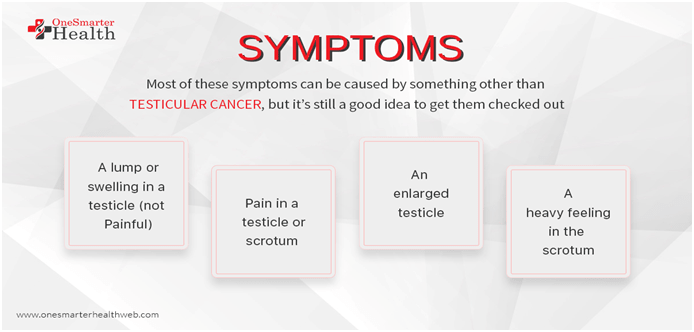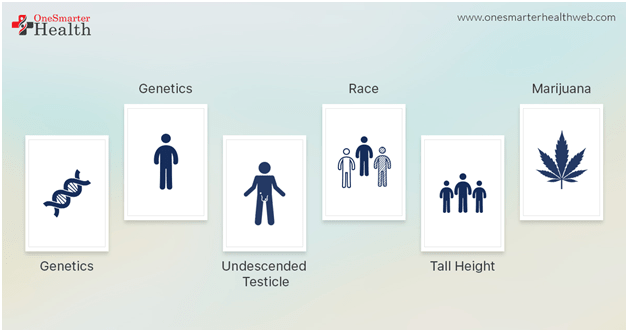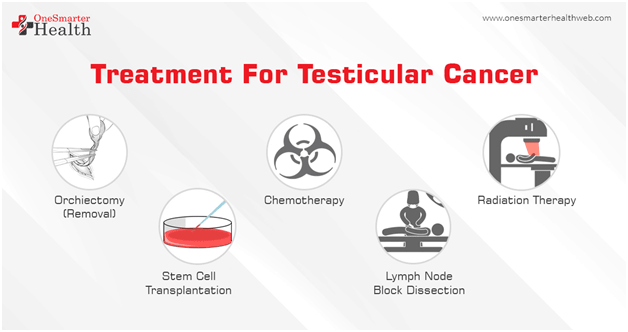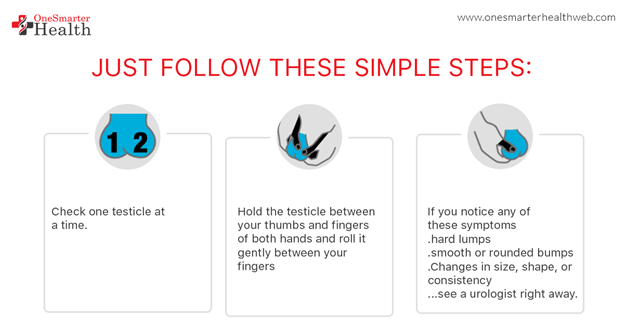With opportune conclusion, testicular malignancy is doubtlessly treatable and frequently reparable. It is the most widely recognized malignant growth in men 15 to 34 years of age. All things considered, it is genuinely uncommon. 9,560 men will be determined to have testicular disease in the U.S. this year. The danger of death from testicular malignant growth is little. Around 400 men will kick the bucket of testicular malignancy in the U.S. this year.

The Testicles, Male Reproductive Organs, Male Reproductive System or The balls (otherwise called testicles or testis) are a piece of the male regenerative framework. These 2 golf ball estimate organs are held in a sac (scrotum) beneath the penis. The balls have a firm, marginally light feel. At the top and outside edge is a rubbery, tube-like structure called the epididymis. The immovability of the gonad ought to be the equivalent all through. The measure of the gonads ought to likewise be about the equivalent.
The balls are the place sperm full grown before being conveyed to the vas deferens and discharged. The balls likewise make male hormones, for example, testosterone. This hormone controls the sex drive in men. It likewise triggers the improvement of male qualities.
Symptoms of a testicular tumor are:
- An easy knot in the gonad (the most widely recognized sign)
- A sentiment of weight in the scrotum
- Swelling of the gonad (with or without agony)
- Torment or a dull hurt in the gonad, scrotum or crotch.

Until demonstrated something else, any protuberance or firm piece of the gonad ought to be viewed as a potential tumor. Of the numerous men who are found to have testicular malignant growth, 75 out of 100 whine of effortless swelling of the gonad and around 17 out of 100 may have torment.
Sadly, usually for men to put off educating their social insurance supplier regarding these signs (for up to a normal of 5 months). Since the tumor can spread amid that time, it is crucial to connect with a urologist immediately when you have a side effect, particularly on the off chance that it goes on for over about fourteen days. The urologist must preclude different issues, for example,
- Epididymitis (Swelling of the epididymis)
- Testicular torsion (bending of the balls)
- Inguinal hernia (when a segment of digestive system jabs through a powerless piece of the stomach muscles close to the crotch)
- Hydrocele (atypical liquid in the scrotum, may occur in 10 out of each 100 cases).
Causes
- A History of Undescended Testes
- How the balls dive into the scrotum amid pregnancy
- How the balls dive into the scrotum amid pregnancy

The main hazard factor connected to testicular tumors is a background marked by undescended balls (cryptorchidism). This implies a gonad did not drop from the mid-region (where it frames in fetal improvement) down into the scrotum by birth. Testicular malignant growth may create in around 8 out of each 100 patients who have had an undescended gonad fixed with medical procedure. The malignant growth can develop in the undescended gonad or in the contrary gonad. Indeed, in grown-ups there is a 2 to 3% rate of a reciprocal tumor (on the contrary side) happening in the meantime or just after the main tumor. Testicular self-tests are significant in these men since a tumor can develop in either gonad.
Other Risk Factors
Men whose father or sibling had testicular malignant growth are likewise at more serious hazard. They ought to likewise complete a self-test every month. More youthful men most importantly, the individuals who are 15 to 34 years of age are in danger for testicular malignant growth. Testicular malignant growth is likewise more typical in white men than in dark men.
Finding
- Wellbeing record and physical test: Your urologist will search for bumps, solidness or indications of swelling, and get some information about a background marked by undescended balls.
- Ultrasound: Your urologist may require a ultrasound (a noninvasive radiological test) to check any suspicious protuberance.
- Blood test: A blood test can be checked for tumor markers (proteins made by most testicular malignancies) that appear if disease is available.
- In contrast to numerous different malignant growths, testicular disease isn't analyzed by taking a biopsy (tissue test). Completing a biopsy could make the malignancy spread.
- On the off chance that your urologist discovers malignant growth, the person in question wll need to decide how genuine it is, the means by which far it has spread or its stage.
Stages
- Stage1: Cancer is discovered just in the gonad.
- Stage2: Cancer has spread to the lymph hubs in the midsection.
- Stage3: Cancer has spread past the lymph hubs in the midsection. There might be malignancy in parts of the body far from the gonads, for example, the lungs and liver.
Treatment

- Medical procedure
Suspicious tumors are first treated by expelling the gonad through a little crotch entry point (orchiectomy). Now and again a testicular prosthesis might be put for corrective reasons.
- Further Treatment
Later treatment relies upon the tumor, since testicular diseases are classified by cell type. The phone type decides how the tumors demonstration organically and react to treatment.
- Seminoma
The most well-known cell type is seminoma. This sort reacts to radiation and chemotherapy. Dynamic reconnaissance (observing) is frequently utilized for low stage seminomas, however you may require radiation or chemotherapy.
- Nonseminomatous Tumors
Treatment can include perception, medical procedure or chemotherapy. The treatment relies upon the kind of cell and spread of sickness. A urologist will utilize imaging devices, for example, chest x-beams and modernized tomography (CT), alongside blood tumor markers, to arrange the malignancy.
- Progressed Testicular Cancer or Aggressive Tumors
Your specialist should check how far the malignant growth has spread. A few cases may call for careful expulsion of lymph hubs in the midriff from the territory behind the peritoneum. On the off chance that the infection is propelled, you might be put on chemotherapy. Regularly authorities recommend a medication "mixed drink," made of 2 or 3 medications, for example, cisplatin, etoposide and bleomycin, to be conveyed in 3 or 4, 3-week cycles. Once in a while leftover tumors may should be expelled precisely after chemotherapy is finished.
After Treatment
- Power and Fertility
- Expulsion of 1 gonad ought not disable your sexual intensity or ripeness. In any case, there is an opportunity of
- A short abatement in sperm creation
- An adjustment in capacity to discharge (after medical procedure to evacuate lymph hubs)
In any case, the other organ ought to redress and make enough testosterone. Additionally, with the present careful methods, this issue is uncommon. A few medications may likewise help turn around discharge issues. Most men can have an ordinary erection after medical procedure. But since discharge can be disabled with medical procedure and in light of the fact that chemotherapy can bring down sperm tallies (typically just briefly), you may wish to bank sperm before treatment.
Development
On the off chance that you have been determined to have a testicular tumor, you can hope to be pursued for somewhere around 5 years with:
- occasional x-beams
- CT checks
- blood tests for tumor markers
- Additionally, since there is an expanded hazard (about 2%) of a second tumor, it is critical to proceed with month to month testicular self-tests.
More Information
Much of the time Asked Questions
How normal are testicular tumors?
Testicular tumors are unprecedented. Testicular tumors create in around 3 out of 100,000 men every year. Be that as it may, while those numbers are low, testicular malignancy is the most widely recognized disease in men age 15 to 34. Additionally, testicular tumors are expanding in occurrence around the world. Attention to the infection has developed since Olympic gold medalist figure skater Scott Hamilton and cyclist Lance Armstrong have had testicular tumors.
What is the fix rate for testicular tumors?
Fortunately a procedure utilizing medical procedure, chemotherapy or radiation (alone or consolidated) has brought about fix rates of practically 100% for low stage or early ailment, and over 85% for further developed tumors.
How would I play out a testicular self-test?

Month to month testicular self-tests are the most significant approach to identify a tumor early. The best time to look at the balls is directly after a hot shower or shower. The scrotal skin is most loose as of now and the gonads can be felt all the more effectively. The test ought to be done while standing and it just takes a couple of minutes.
Search for swelling in the scrotum or any adjustments in appearance.
Tenderly feel the scrotal sac to discover a gonad.
Look at the balls each one in turn. Solidly and delicately roll every gonad between the thumb and fingers of two hands to feel the entire surface.
Note that it is typical for one gonad to be somewhat bigger than the other. It is likewise ordinary to feel a line like structure (the epididymis) on the top and back of every gonad.
In the event that you discover a bump, swelling, torment or other change, get it looked at immediately. Changes are not generally malignancy. In the event that it is disease and you get it early, you have the most obvious opportunity for a fix.
You Can Also Read Our Blog On Esophageal Cancer
OneSmarterHealth is a pre-eminent cancer portal which helps you to connect with the best cancer consultants from the top 10 cancer hospitals in the USA. By clicking directly, you will get a second opinion and online consultation from the reputed oncologists in the USA.
So, what are you waiting for? Visit the website of OneSmarterHealth and connect with them for a second opinion from an US-based doctor. Your one simple step can bring a smile to your loved ones.
